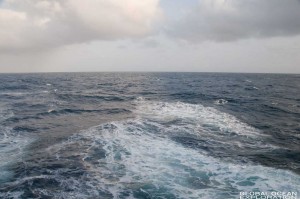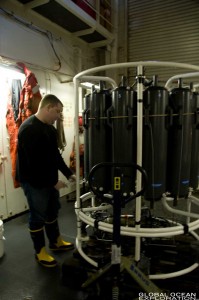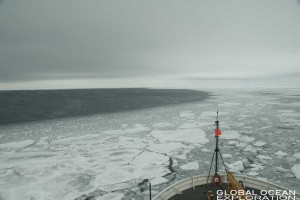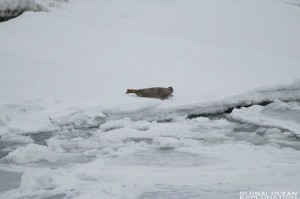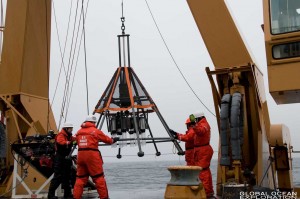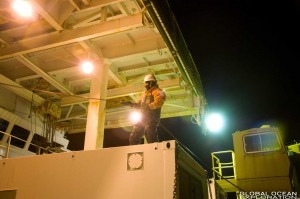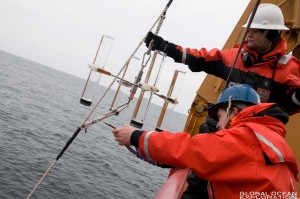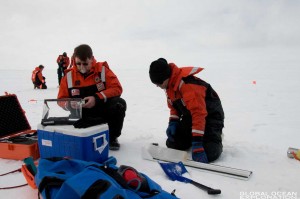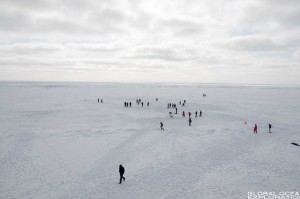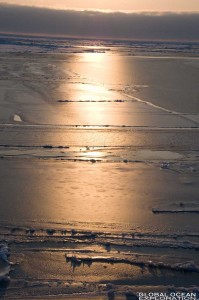Â
Weather is often a big problem for flights out of Dutch Harbor this time of year so I was expecting to wake up to rain and wind in the morning but it was sunny and the wind seemed calm. This boded well for our departure.  I had heard stories throughout the cruise about the Dutch Harbor runway and how you have to take off between two volcanoes and bank a turn and on and on, but this did not concern me. I was in “go mode†so I was ready to begin my voyage home.Â
Before heading to the airport, I had breakfast at a local restaurant, Amelia’s. It was certainly a hearty breakfast and it was delicious. One very nice thing about being off of the ship is the ability to choose what you eat. I had a waffle with strawberries and whipped cream. Everything served there looked amazing and smelled great too. It is definitely a place not to miss if you end up in Dutch Harbor. The other thing Amelia’s is good for is getting the scoop of what is going on in town and in our case the airport. It turns out that one flight from the day before was canceled so all of those passengers were going to be trying to get onto my flight. With that, I headed to the airport early to check in and make sure I got my seat.Â
Like the flight to St. Paul, we were flying in a small prop plane but unlike our flight to St. Paul, this flight was packed and there was not an empty seat. The plane came in late and we were then informed that we would have to make a stop in King Salmon for refueling as we were carrying a heavy load. That is not the exact words one likes to hear before boarding a plane. The cast of characters waiting in the airport was what one would expect, other than the scientists, there were fishermen and other salty characters still in their rubber boots.Â
Finally the plane arrived and we boarded. I was sitting next to one of the “salty characters†who still had his fishing boots on and smelled of bait. The weather held and we got out, made our fuel stop in King Salmon, and arrived in Anchorage about two hours late. This was fine for me as I had a long layover in Anchorage.Â
Upon landing in Anchorage, the unknown part of the journey ended and I was back on my way to the bustling streets of New York where I could only reflect on what an amazing feeling it was to be on a ship in the Bering Sea.Â
Â









